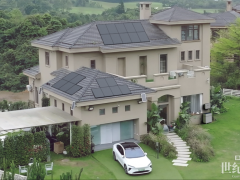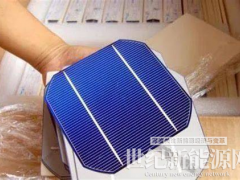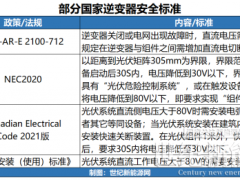目前,太陽能發電的模式主要有兩種:一種是利用以硅為原料的光伏電池直接把陽光轉化為能量的光伏發電,另一種則是利用太陽能聚光及熱轉換系統發電的光熱發電。這兩種太陽能發電模式能否并用,其優點能否集于一體呢?斯坦福大學研究人員最近公布的一項新太陽能技術給了人們肯定的答案――他們研制的PETE裝置利用半導體材料銫涂層可將效率提高至60%,3倍于現有水平。

屋頂太陽能電池板利用硅將光轉換成電能,但其效率在高溫條件下迅速下降,而現有光熱發電系統由只能利用光熱發電,魚與熊掌不可兼得。但斯坦福大學的研究人員發現了一種半導體材料銫涂層,可以將光和熱同時轉換為能量。
新技術可提高熱離子發射光子,研究人員簡稱之PETE。PETE設備還有一很大的優點,它可以方便地安裝入現有廉價的太陽能收集系統中。
PETE 設備只需要少量的半導體材料,價格相當低廉。 設計團隊還希望其設計可以很容易地固定在現有太陽能收集設備上,以降低太陽能發電成本。
與熱轉換系統同時使用時,PETE裝置效率可高達到60%。然而,即使PETE只將效率提高至30%,也能促使太陽能發電價格下降低至石油價格,這是一個巨大的飛躍。


We currently have two types of solar energy: energy generated from light, using silicon-based photovoltaic cells, and energy generated from heat, using solar concentrators and heat-conversion systems. What if we could collect both types of energy at once? Stanford researchers recently unveiled a new solar tech that can do exactly that ― their PETE devices utilize a semiconducting material coated with cesium to boost efficiency levels up to 60 percent ― three times that of existing systems.
Rooftop solar panels use silicon to convert light into electricity. But their efficiency declines rapidly at higher temperatures (like those needed to power heat-conversion systems). An either/or choice presents itself ― but Stanford researchers found that a cesium coating allowed semiconducting materials to convert both light and heat into energy.
They dubbed the process PETE, for photon enhanced thermionic emission. Best of all, PETE devices could be cheaply and easily incorporated into existing solar collection systems. (Because the system hits peak efficiency at over 200 degrees Celsius, it’s not a good fit for rooftop arrays.)
PETE devices require only a small amount of semiconducting material, making them cheap. Melosh’s team also hopes to design devices that can easily be bolted on to existing solar collection systems, so that conversion would also be low-cost.
When used with the heat-conversion process, PETE devices could reach 60 percent efficiency. But even if they boost efficiency just to 30 percent, they will bring solar power down to the price point of oil. And that’s a good thing.
 微信客服
微信客服 微信公眾號
微信公眾號









0 條